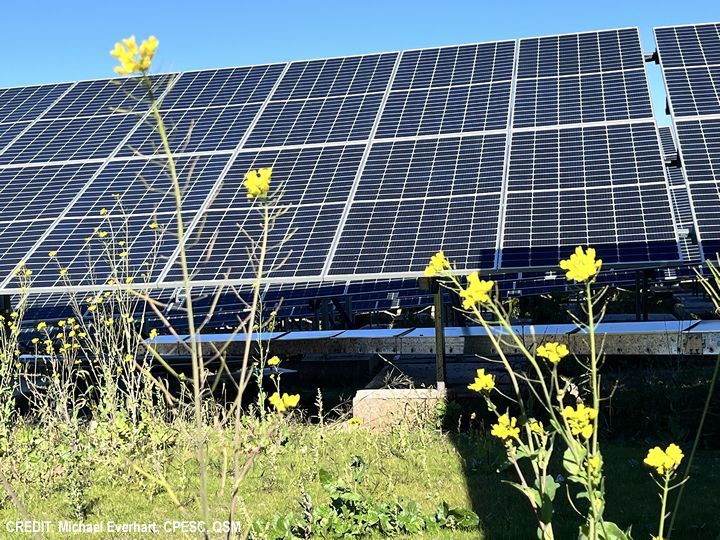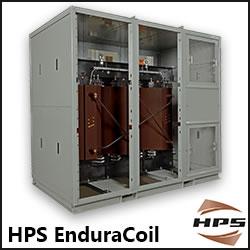Digging deep in soil analytics toward achieving clean energy and sustainability. The key is to employ proactive and effective stormwater management to protect the environment and ensure solar installation viability.
 A Forward-Thinking Approach to Solar Project Success
A Forward-Thinking Approach to Solar Project Success

Steve MacShane, Market Development Manager | Profile Products
As the global clean energy transition is swiftly underway, solar energy projects are cementing themselves as a cornerstone of this movement. While these projects are transforming clean energy, they come with unique challenges that if left unchecked, could harm sensitive infrastructure and ecosystems. Specifically, project owners need to consider what is happening below the panels at the ground level.
According to new research from Profile Products LLC, an agronomic solutions company, many solar sites face soil health and erosion risks that can lead to environmental harm, costly fines and budget overruns, stop-work orders, and mistrust from communities. It’s crucial that project developers implement the best management practices for sustainability, reduced maintenance costs and project longevity. The key is to employ proactive and effective stormwater management to protect the environment and ensure solar installation viability, support natural ecosystems, and provide value to the communities they serve.
.jpg) To proactively evaluate soil health and erosion risk on specific projects, Profile Products developed a GIS data-modeling tool called PV-IMPACTS (Integrated Mitigation Program for Assessment of Climate, Topography and Soils). The program evaluates more than a dozen geospatial factors that impact a solar site to determine its level of risk.
To proactively evaluate soil health and erosion risk on specific projects, Profile Products developed a GIS data-modeling tool called PV-IMPACTS (Integrated Mitigation Program for Assessment of Climate, Topography and Soils). The program evaluates more than a dozen geospatial factors that impact a solar site to determine its level of risk.
In a recent analysis of more than 13,900 current and potential solar sites, more than 48% of solar projects — representing over 323,000 acres — have areas classified as at-risk for soil health issues. Poor soil health can lead to impaired vegetation establishment, increasing and perpetuating erosion risks.
In addition to the soil health risks, the software found 29% of projects are at-risk for increased erosion based on key geospatial factors. This equates to more than 294,000 acres of land that could experience significant erosion. If left untreated, erosion can lead to regulatory intervention and stormwater violations, soil degradation, water pollution and project delays that impact the sustainability of solar projects. As solar installations often require large expanses of land with stable ground for infrastructure, this dual threat of deteriorating soil health and erosion poses a significant challenge for the industry.
While these percentages may not seem like high probabilities of facing soil health or erosion issues, it’s important to keep in mind that most of the simple sites for development have already been selected. Developers are going to be forced to look to areas that are less ideal for future development, and it will be crucial to consider how what’s happening beneath the panels may impact the solar project overall. Beyond the environmental risks, regulatory, economic impact and public perception risks are all interconnected to determine whether a project may succeed or fail.
Utility-scale solar development projects are subject to stringent environmental regulations that promote sustainable land management practices. If these regulations are not followed, it can result in stop-work orders (SWO) and increased scrutiny. Proactively adhering to these guidelines can prevent costly delays.
Beyond facing fines, unchecked erosion can also lead to budget overruns. In severe cases, erosion can cause damage to solar panels or other transmission infrastructure that will need to be repaired or replaced, which can balloon budgets even further. By prescribing and budgeting in an erosion control solution early into the project, it will save developers from much more costly repairs down the road.
Public perception and community support play a vital role in the success of solar projects, especially in rural or agricultural areas. Visible signs of erosion-caused site degradation and sediment release along roads and into waterbodies can lead to community resistance against current and future projects. But if developers implement a robust erosion control plan, demonstrating a commitment to environmental stewardship and sensitivities to community-wide economic impacts, it can enhance community goodwill and secure local support.

More than 29% of solar sites are at-risk for increased erosion, underscoring the need for solar developers to create an erosion control plan like the one pictured here.
CREDIT: Michael Everhart, CPESC, QSM
Implementing Best Management Practices
With the right strategies in place, erosion control becomes an opportunity to enhance site sustainability and resilience for projected climatic challenges. One of the best management practices for these sites is to establish sustainable vegetation for long-term erosion control. By establishing ground cover, it can stabilize soil, reduce dust on panels, improve water infiltration, add ecological value, boost community perception and improve panel efficiency.
Project developers can achieve this lush ground cover by following five simple steps. First, it’s important to assess and create optimal soil conditions. This involves conducting a soil test to identify nutrient deficiencies, pH imbalances and organic matter content to create a prescriptive solution to amend to optimal levels.
With the soil test complete, the next step is to select the right plant species. It is essential to select plant species that are adapted to project site conditions, intended use, maintenance requirements and regional ecological characteristics. Project developers can utilize agronomists who are qualified to help select the right plant species to meet project needs. Often, this includes planting native species that can improve site sustainability and benefit the natural environment.
The next step is to select the right erosion control solution. A best management practice for erosion control is to use an advanced technique called hydroseeding. This practice involves applying a slurry of seeds, mulch, water and soil-enhancing technologies over large areas to temporarily stabilize the soil, improve soil health, and promote rapid vegetation growth. Depending on the slope of the land, a hydroseeding professional can help project developers determine which products will foster optimal erosion control and address any soil health deficiencies. Moreover, hydroseeding is an eco-friendly solution that does not introduce any plastic, netting or staples into the environment, which can happen with other erosion control products. The products themselves are made from biodegradable materials. This best management practice eliminates the risk of wildlife entanglement in erosion control netting and naturally enhances the landscape.
The fourth step is to ensure proper installation of these products. Because hydroseeding is applied hydraulically via the tower of the hydroseeding machine in early phases of construction or by hose work in hard to access areas, it can be applied around sensitive solar panels without disruption. The hydroseeder can move between panels and ensure even application of the material. Installing the agronomic treatments and erosion control products in accordance with the manufacturer’s mixing and application guidelines will maximize their performance to meet project requirements.
With the solution applied, the final step is to conduct follow-up inspections and implement maintenance practices. As with any solution, it’s important to monitor how the project is progressing to make sure all site requirements and compliance issues are being addressed. Maintenance may be required dependent on seed species selection and to mitigate unexpected challenges. Subsequent inspections should be arranged and maintenance activities conducted to ensure progress in accordance with the Vegetation Management Plan (VMP).
These measures help improve the ecological balance of the site while supporting clean energy generation. A well-managed solar site can serve as a model for how renewable energy projects are sustainable beyond the concept of alternative energy generation.
Additional Community Benefits
When project developers follow a proper erosion control plan, they provide additional benefit to the community. Solar sites have the potential to be more than just clean energy producers — they can also serve as sanctuaries and travel corridors for pollinators. Pollinators like bees, butterflies and other insects are vital for agriculture, biodiversity and overall ecosystem health, yet their populations are in decline due to habitat loss and climate change.
By planting pollinator-friendly vegetation beneath and around solar arrays, developers can create new habitats to support these species. For example, wildflowers and native grasses stabilize soil while offering food and shelter for pollinators. This can be especially beneficial in rural or farming communities. Based on Profile Products’ analysis, establishing these habitats on major solar projects can boost yields for nearby farms with an estimated annual economic benefit of $63.9 million in increased agricultural productivity.
Erosion control is not just a maintenance concern for solar sites; it is an opportunity to advance clean energy goals while fostering environmental stewardship. By implementing best practices and embracing innovative data-modeling solutions, solar developers can ensure their projects deliver lasting benefits for both the planet and the communities they serve.
The PV-IMPACTS data-modeling tool used to provide state of the industry analysis for this article is designed to also provide analysis of independent, site-specific conditions. For more information on implementing these best management practices or to request complementary analysis of a utility-scale solar site, visit profilesolarsolutions.com.
Stephen MacShane is a market development manager at Profile Products. He can be reached at smacshane@profileproducts.com.
The content & opinions in this article are the author’s and do not necessarily represent the views of AltEnergyMag
Comments (0)
This post does not have any comments. Be the first to leave a comment below.
Featured Product

